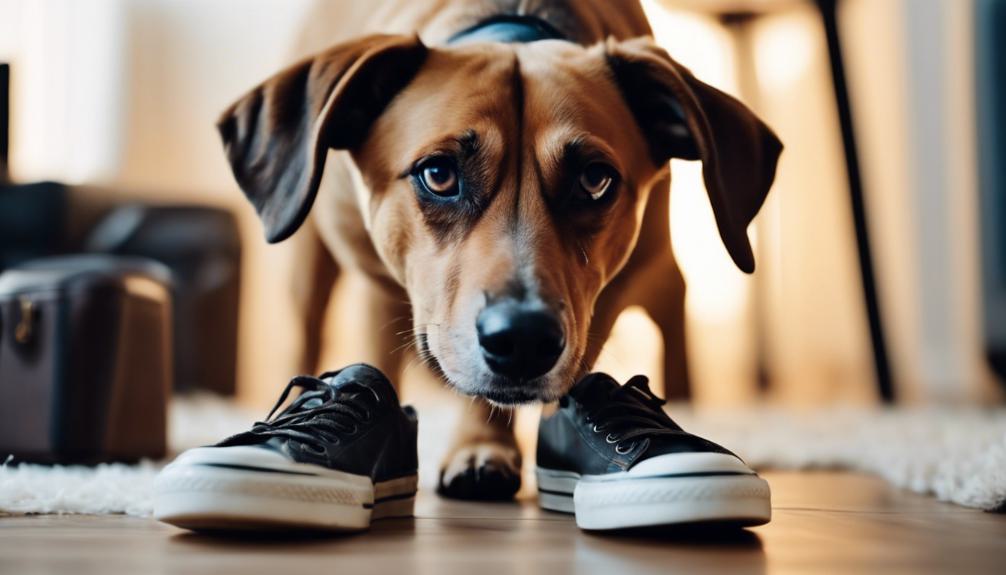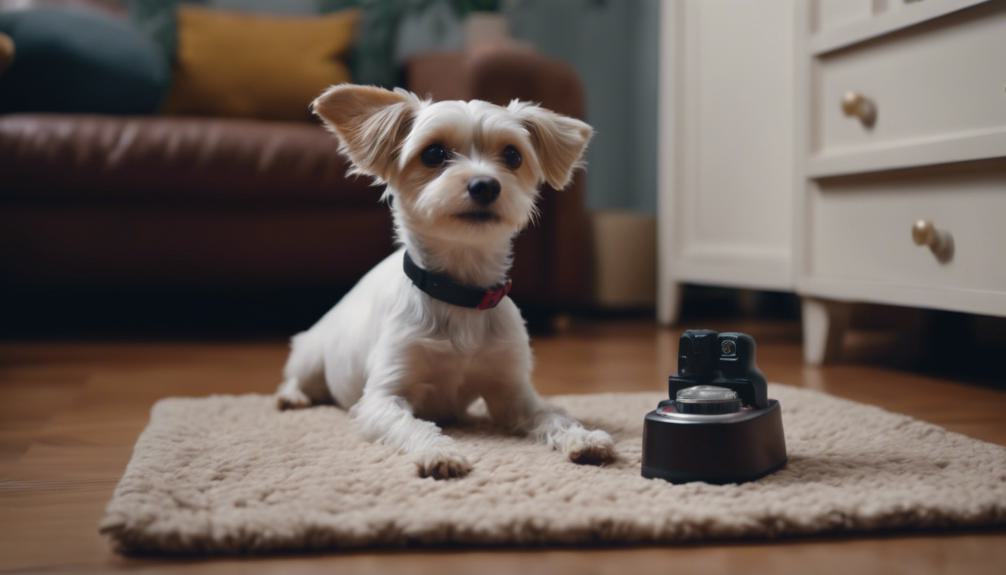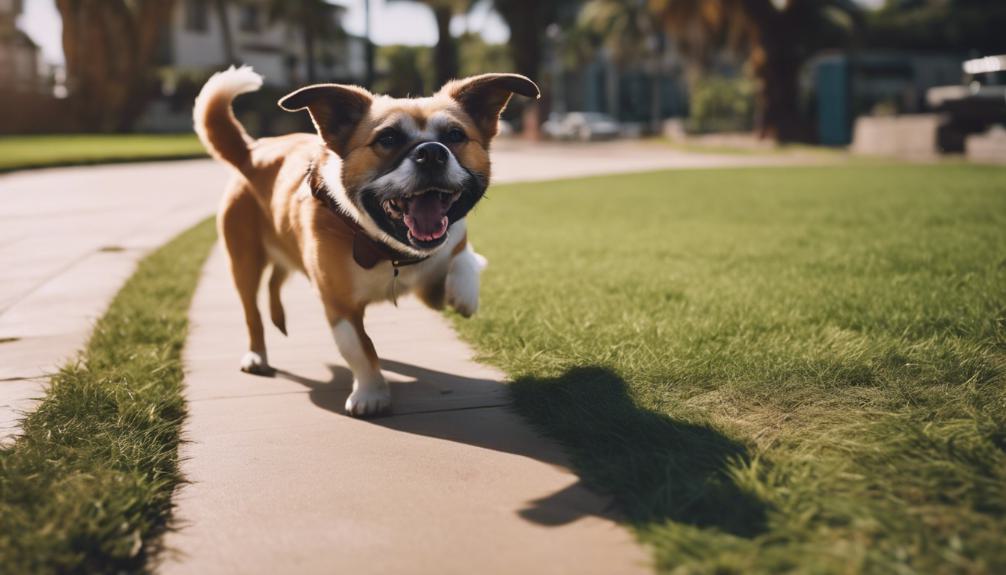How to Train Your Dog to Wear Shoes? Practical Advice
To initiate your dog to wear shoes, begin by gently handling their paws and using positive reinforcement. Keep sessions short and sweet, giving treats to create a happy association. Slowly acquaint the shoes by letting your dog sniff and explore them, offering rewards for interest and progress. Allow your dog to investigate the shoes, praising them for interacting positively. Consistency is key, as well as rewarding good behavior. Keep sessions brief and positive to help your dog adjust comfortably. Taking these steps will help your furry friend acclimate to wearing shoes smoothly and confidently.
Paw Handling and Positive Reinforcement
To train your dog to wear shoes, first focus on getting them used to having their paws handled. Many dogs don’t like their paws touched, so keep initial sessions short and positive. Reward them with treats to link paw touching with happy outcomes. Gradually, touch each paw one at a time, making sure your dog stays calm and safe. Be consistent and patient as you work on paw handling. Building trust and comfort with this helps make it easier to put shoes or boots on your dog later.
Remember to approach each training session with a clear plan. Use a calm voice and gentle touch. Offer examples like small pieces of chicken or cheese as treats, which most dogs find irresistible. This method not only keeps your dog interested but also makes learning enjoyable. Keep emotions like frustration in check to maintain a productive atmosphere. Try varying your training methods slightly to keep your dog engaged. Once your dog seems comfortable with paw handling, slowly introduce shoes in a similar, rewarding manner.
Slow Introduction of Shoes
To help your dog get used to shoes, place the boots on the floor to let your pet sniff and explore them. Once familiar with their presence, give a treat each time your dog shows interest in the shoes. This creates a positive connection.
Gradually, put the boots on one paw at a time, rewarding your dog each step of the way. Remember, your pet might take a while to be completely comfortable in the boots, so patience is key.
For further encouragement, take short walks outside with the boots on. This helps reinforce the positive experience.
Sniff and Inspect Shoes

Allow your dog to explore new shoes by sniffing and inspecting them. This helps them get used to the item. Reward your dog with treats when they show interest in the shoes. This creates a positive association.
Present the shoes gently, letting your dog first sniff and inspect them before trying to put them on. Praise your dog for interacting with the shoes, as this builds confidence and comfort.
Using positive reinforcement and careful presentations will make your dog more comfortable with wearing shoes.
Reward Positive Behavior
Reward your dog with high-value treats such as cooked chicken or cheese when they show positive behavior in their shoes. This method reinforces good behavior and builds a positive link with the shoes.
Reward them quickly when they’re calm and cooperative during training. By doing this consistently, especially at the start, your dog is more likely to accept wearing shoes comfortably.
This technique motivates your dog to wear shoes by associating them with enjoyable experiences. Using this approach makes the training process easier and more efficient.
Short Training Sessions

Keep training sessions short to help your dog get used to wearing shoes. Use positive reinforcement during these sessions to make each step manageable and associate the experience with something good.
Short, regular sessions prevent your dog from feeling overwhelmed and help them slowly get used to the shoes. Breaking the training into short periods builds comfort with this new accessory.
Consistency is crucial for a smooth and positive adjustment to wearing shoes. Remember, short and positive sessions will make your dog comfortable and confident in their new footwear.
Overcoming Resistance
To help your dog get used to wearing shoes, first let them sniff and explore the shoes. Associate the shoes with positive experiences to ease the process. Reward your dog with a treat whenever they show interest or allow you to put on a shoe. This positive reinforcement helps your dog gradually accept wearing shoes.
Initially, have your dog wear the shoes for short periods, then slowly increase the duration to build their tolerance and comfort. Check that the shoes fit well to avoid discomfort that might cause resistance. Consistently train your dog and reward their good behavior to successfully teach them to wear shoes.
Consistency Is Key

Consistency is crucial when teaching your dog to wear shoes. Maintain a regular training schedule, and use treats and positive reinforcement to support your dog in building this routine.
Repeat the training steps often to strengthen this behavior and establish a predictable setting for your dog. A clear routine helps your dog adjust to wearing shoes more comfortably.
Consistently rewarding and praising your dog for wearing shoes will make them link this action with positive experiences, increasing their willingness to train.
Stick to the plan, remain consistent, and observe your dog’s progress in wearing shoes.
Gradual Progression
Training your dog to wear shoes requires a methodical approach to avoid causing them stress.
Follow these practical steps for a smooth transition:
- Put the boot on for short periods: Initially, only have your dog wear the boot briefly. This helps them acclimate to the new feeling.
- Let your dog investigate: Before putting it on, allow your dog to sniff and explore the boot. This familiarity can make them more at ease.
- Give plenty of time: Progress slowly, letting your dog grow accustomed to the boots at their own pace. Gradually extend the wearing time as they show signs of comfort. Patience is essential throughout this training.
Importance of Rewards

Rewards are crucial for training your dog to wear shoes, as they help build a positive connection with the footwear. Offer treats to make this process enjoyable for your pet. Positive reinforcement boosts your dog’s comfort and confidence, particularly useful during outdoor activities. By treating good behavior, you encourage your dog to focus on the benefits of wearing shoes rather than discomfort. This approach not only improves training effectiveness but also ensures your dog’s willingness to wear shoes when necessary. Below is a table summarizing the benefits of using rewards in training your dog to wear shoes:
| Benefits of Rewards in Training Your Dog to Wear Shoes |
|---|
| Builds positive associations with shoes |
| Increases dogs’ comfort and confidence |
| Encourages dogs to wear shoes outdoors |
This method simplifies the training process, making it a more straightforward and positive experience for both you and your dog.
Frequently Asked Questions
How Do I Get My Dog to Wear Shoes?
To initiate the process of getting your dog to wear shoes, familiarize them with the shoes through sniffing and treats. Commence by putting on one shoe at a time, increasing gradually. Reward with treats and praise. Practice indoors first.
How Do I Desensitize My Dog to Shoes?
To desensitize your dog to shoes, initiate the process slowly and positively. Let your dog sniff the shoes, offer treats, and gradually touch the shoes to their paws. Use treats to distract and create a good association.
How Long Does It Take for Dogs to Get Used to Boots?
Getting used to boots varies for each dog. Consistent training with positive reinforcement is key. Some pups adapt quickly, while others need more time. Monitoring behavior and comfort levels is essential throughout the process for success.
Is It Uncomfortable for Dogs to Wear Shoes?
Wearing shoes can be uncomfortable for dogs initially; the weight and stiffness may feel odd. It is important to gradually acquaint shoes. With time and positive reinforcement, your dog can adjust to wearing shoes comfortably, ensuring safety and protection.
Conclusion
Training your dog to wear shoes requires time and patience. Use positive reinforcement consistently and progress gradually.
Reward your dog’s good behavior, keep training sessions short, and patiently handle any resistance.
By sticking to these steps, your dog will adapt to wearing shoes and will be ready to walk comfortably outdoors.

